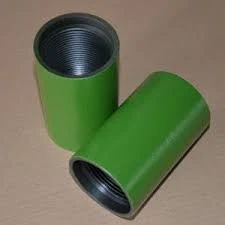- Afrikaans
- Albanian
- Amharic
- Arabic
- Armenian
- Azerbaijani
- Basque
- Belarusian
- Bengali
- Bosnian
- Bulgarian
- Catalan
- Cebuano
- Corsican
- Croatian
- Czech
- Danish
- Dutch
- English
- Esperanto
- Estonian
- Finnish
- French
- Frisian
- Galician
- Georgian
- German
- Greek
- Gujarati
- Haitian Creole
- hausa
- hawaiian
- Hebrew
- Hindi
- Miao
- Hungarian
- Icelandic
- igbo
- Indonesian
- irish
- Italian
- Japanese
- Javanese
- Kannada
- kazakh
- Khmer
- Rwandese
- Korean
- Kurdish
- Kyrgyz
- Lao
- Latin
- Latvian
- Lithuanian
- Luxembourgish
- Macedonian
- Malgashi
- Malay
- Malayalam
- Maltese
- Maori
- Marathi
- Mongolian
- Myanmar
- Nepali
- Norwegian
- Norwegian
- Occitan
- Pashto
- Persian
- Polish
- Portuguese
- Punjabi
- Romanian
- Russian
- Samoan
- Scottish Gaelic
- Serbian
- Sesotho
- Shona
- Sindhi
- Sinhala
- Slovak
- Slovenian
- Somali
- Spanish
- Sundanese
- Swahili
- Swedish
- Tagalog
- Tajik
- Tamil
- Tatar
- Telugu
- Thai
- Turkish
- Turkmen
- Ukrainian
- Urdu
- Uighur
- Uzbek
- Vietnamese
- Welsh
- Bantu
- Yiddish
- Yoruba
- Zulu
PUP Joint Specifications for Enhanced Performance and Reliability in Engineering Applications
Understanding Pup Joint Specifications in Oil and Gas Industry
In the oil and gas industry, the term pup joint refers to a short piece of pipe that is used to connect longer lengths of pipe or to adjust the length of a drill string or other piping systems. When drilling for oil and gas, maintaining the integrity and efficiency of the drilling operation is crucial, and pup joints play a significant role in achieving this goal. This article aims to provide an in-depth understanding of pup joint specifications, emphasizing their importance in the oil and gas sector.
Definition and Purpose of Pup Joints
Pup joints are typically fabricated to standard lengths, usually ranging from 1 to 10 feet, depending on the specific requirements of a project. Although they are short, their role cannot be understated. Pup joints allow for minor adjustments in the length of the drill string, making it easier to fine-tune the equipment's setup without the need to dismantle and reconfigure significant portions of the assembly. Pup joints can also serve as a buffer to accommodate thermal expansions or contractions of the pipe.
Key Specifications
1. Dimensions The dimensions of a pup joint, including its outer diameter, inner diameter, and length, are crucial specifications that must meet the requirements of the application. Typically, these dimensions are consistent with the available pipe standards, such as API 5L or API 5CT.
2. Material The material used for manufacturing pup joints is critical for ensuring durability and performance. Common materials include carbon steel, stainless steel, and various alloys, depending on the corrosive nature of the environment and the specific mechanical properties required. The material must withstand high pressures and extreme temperatures that are prevalent during drilling operations.
3. Connection Type Pup joints can come with various connection types, such as threaded, welded, or flanged. The choice of connection largely depends on the application and the type of equipment being used. Threaded connections are common due to their ease of assembly and disassembly, while welded connections provide a more robust and permanent solution.
4. Pressure Rating The pressure rating of a pup joint indicates its capacity to withstand internal pressures during the drilling process. This specification is closely linked to the material and thickness of the pup joint and must be aligned with the specifications of the entire pipe system to ensure safety and reliability.
pup joint specifications

5. End Connections Different end connections can be designed on pup joints, such as hook connections or male and female threads. These features impact how the pup joints join with other pieces of equipment, and ensuring compatibility is essential for the successful implementation of the full system.
Importance in Operations
Using pup joints provides various operational advantages. First, by allowing precise length adjustments within a drilling assembly, they ensure optimal setup for various drilling conditions. This adaptability can significantly reduce downtime and increase the efficiency of drilling operations.
Moreover, pup joints also help reduce costs by mitigating equipment wear and tear caused by constant adjustments of longer tubing. When properly utilized, they can also contribute to safety by eliminating the need for frequent disassembly and reassembly of longer pieces of equipment, which can pose risks in high-pressure environments.
Industry Standards and Quality Assurance
Pup joints must be manufactured according to industry standards, such as those set by the American Petroleum Institute (API). Compliance with these standards ensures that the joints meet stringent quality and safety requirements. Regular inspections and testing are essential to ensure that the pup joints function optimally during operations.
Quality assurance processes often include non-destructive testing (NDT) methods to detect any potential flaws in the material or manufacturing process. This commitment to quality not only enhances operational reliability but also extends the lifespan of the equipment.
Conclusion
Pup joints may be small components in the vast machinery of oil and gas drilling, but their specifications and proper utilization are crucial for successful operations. Understanding and adhering to the specifications of pup joints ensures that they meet the demands of high-pressure and variable conditions of drilling environments. By investing in quality pup joints and maintaining high standards in their selection and usage, companies can enhance efficiency, improve safety, and ultimately drive down operational costs.
-
Well Casing Extension Couplings – Applications and InstallationNewsJun.06,2025
-
Types of Crossover Subs in Drilling & CompletionNewsJun.06,2025
-
Key Features of High-Quality Tubing Pup JointsNewsJun.06,2025
-
Installation and Maintenance Tips for Steel Couplings for PipeNewsJun.06,2025
-
How to Select the Right Pup Joint for Oil & Gas OperationsNewsJun.06,2025
-
Applications of Stainless Steel Pipe CouplingsNewsJun.06,2025







